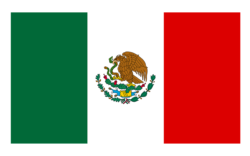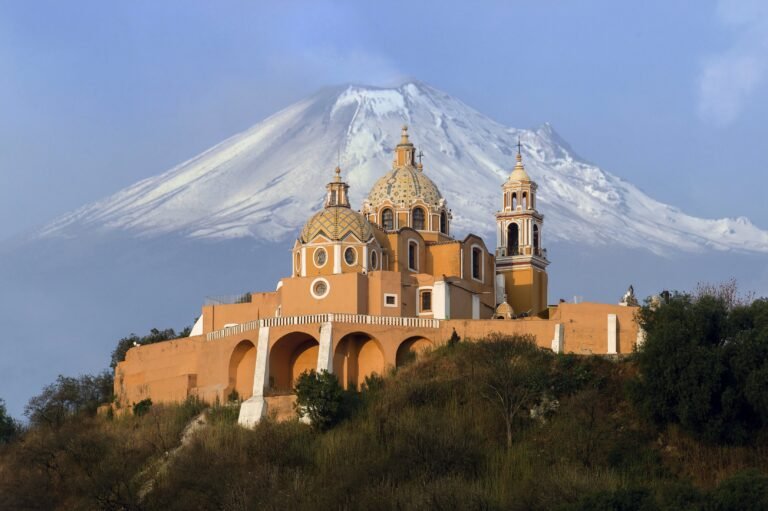What Does The Cactus Mean On The Mexican Flag?
Have you ever wondered about the meaning behind the cactus on the Mexican flag? This iconic symbol holds deep significance in Mexican culture and represents the founding of the great city of Tenochtitlan, now known as Mexico City. As the legend goes, the Aztecs were instructed by the gods to settle in a place where they would see an eagle devouring a snake on top of a cactus. This extraordinary sight became the symbol of their glorious civilization and is proudly displayed on the Mexican flag to this day. Join us on a journey to explore the rich history and cultural significance of the cactus on the Mexican flag.

1. Overview of the Mexican Flag
The Mexican flag is a vibrant and symbolic representation of the country’s rich history and culture. It consists of three vertical stripes of green, white, and red, with the national emblem, a golden eagle perched on a cactus devouring a serpent, proudly displayed in the center. This iconic flag holds immense significance for the Mexican people and serves as a proud national symbol.
1.1 Colors and Symbolism
The colors of the Mexican flag hold deep symbolism. The green stripe represents hope and independence, inspired by the lush Mexican landscape and the agricultural wealth of the nation. The white stripe embodies purity, reflecting the ideals of the Mexican people in their pursuit of peace and unity. Lastly, the red stripe represents the blood and valor of the national heroes who fought for the country’s freedom and independence.
1.2 Historical Background
The current version of the Mexican flag was adopted in 1968, but its design has evolved over centuries of Mexican history. The use of the tricolor pattern of green, white, and red dates back to the early 19th century, during the Mexican War of Independence. The design of the national emblem with the eagle, cactus, and snake has its roots in Aztec mythology and was incorporated into the flag during the period of Mexican nationalism in the 19th century.
2. History of the Mexican Flag
2.1 Pre-Hispanic Period
Before the Spanish conquest in the 16th century, Mexico was inhabited by various indigenous civilizations. The Aztecs, in particular, had a profound influence on Mexican culture and symbolism. They believed in the mythological connection between the eagle, the snake, and the cactus. This connection would later be incorporated into the design of the Mexican flag.
2.2 Spanish Conquest
The arrival of the Spanish conquistadors in the 16th century marked a significant turning point in Mexican history. The indigenous cultures were subjugated, and their traditions and symbols were suppressed. The Spanish introduced their own flag, which heavily influenced the subsequent evolution of the Mexican flag.
2.3 Independence Movement
The Mexican War of Independence, which began in 1810, led to a resurgence of Mexican national identity and the creation of a new Mexican flag. The tricolor pattern of green, white, and red was adopted as a symbol of the independence movement, with various designs and variations used by different factions throughout the war.
2.4 Modern Design
The modern design of the Mexican flag, with its emblematic eagle and cactus, was established in 1821 when Mexico gained its independence from Spain. The flag evolved over time, with minor modifications made to the emblem and proportions. The current design, with the proportions of 4:7, was officially adopted in 1968.
3. Significance of the Cactus on the Mexican Flag
3.1 National Emblem
The cactus on the Mexican flag is an integral part of the national emblem. It symbolizes the foundation of the great civilization of the Aztecs, who believed that their capital city, Tenochtitlan, was destined to be built where an eagle was perched on a cactus devouring a snake. This mythological event is depicted on the flag as a powerful representation of the historical and cultural roots of the Mexican people.
3.2 Symbol of Endurance
The cactus is also seen as a symbol of endurance and resilience. Just like the cactus can thrive in harsh desert conditions, the Mexican people have shown tremendous strength and perseverance throughout their history. The presence of the cactus on the flag serves as a reminder of the indomitable spirit of the Mexican nation and its ability to overcome challenges.
3.3 Cultural Identity
The cactus holds a special place in Mexican culture and identity. It is not only a symbol of the nation but also a plant deeply rooted in Mexican traditions and folklore. From its use in traditional medicine to its presence in Mexican cuisine, the cactus represents the unique cultural heritage of Mexico and its people.
4. Connection Between Cacti and Mexico
4.1 Native Cactus Species
Mexico is home to an astonishing diversity of cactus species, with over 1,000 known varieties. These spiky succulents have adapted to the arid landscapes of Mexico and have become an integral part of its ecosystem. The cactus symbolizes the resilience and adaptability of the Mexican people, just like the plants themselves.
4.2 Cactus in Mexican Culture and Cuisine
Cacti have played a significant role in Mexican culture for centuries. The vibrant and intricate art of cactus embroidery is a notable example of their cultural significance. Additionally, cacti are also widely utilized in Mexican cuisine, with the most famous example being the nopal cactus, which is a staple ingredient in traditional Mexican dishes. The connection between cacti and Mexico extends beyond symbolism and into everyday life.

5. Other Symbols on the Mexican Flag
5.1 Coat of Arms
The coat of arms on the Mexican flag features a golden eagle, perched on a prickly pear cactus, gripping a snake in its beak and talons. This emblem represents the founding of Tenochtitlan, the ancient capital of the Aztec Empire. It is a powerful symbol of national pride and unity for the Mexican people.
5.2 Eagle
The eagle depicted on the Mexican flag is a specific species known as the golden eagle or Aquila chrysaetos. This majestic bird is highly revered in Mexican culture and represents power, strength, and freedom. The eagle’s position on the flag, devouring a snake, symbolizes the triumph of good over evil, echoing the ancient Aztec myth.
5.3 Nopal Cactus and Snake
The presence of the snake in the Mexican flag’s emblem represents the struggle between good and evil. It is believed to symbolize the challenges faced by the Mexican people throughout their history. The serpent being devoured by the eagle on the cactus serves as a potent symbol of triumph and victory.
6. Controversies Surrounding the Mexican Flag
6.1 Indigenous Perspectives
Some indigenous groups in Mexico have expressed concerns about the symbolism of the Mexican flag, including the depiction of the eagle, snake, and cactus. They argue that these symbols do not accurately represent their history and beliefs, and instead perpetuate a dominant narrative that disregards their contributions and cultural heritage.
6.2 Political Criticisms
The Mexican flag, like any national symbol, is not immune to political criticisms. Some individuals and groups have questioned the use of the flag by politicians and government institutions, arguing that it is often utilized for political gain rather than as a genuine representation of national unity and pride.

7. Usage and Display of the Mexican Flag
7.1 National Holidays and Celebrations
The Mexican flag is proudly displayed and used during national holidays and celebrations. It is a common sight during events such as Independence Day on September 16th, when Mexicans commemorate their country’s liberation from Spanish rule. Other significant dates, such as Flag Day on February 24th, also see widespread flag displays across the country.
7.2 Proper Etiquette
In Mexico, there are specific guidelines for the usage and display of the national flag. It should always be treated with respect and dignity. For example, the flag should not touch the ground, and it should be hoisted and lowered ceremoniously. Additionally, during times of mourning, the flag may be displayed with a black ribbon as a mark of respect.
8. Similarities with Other National Flags
8.1 Cacti and Flags of other Countries
The use of cacti in national flags is not exclusive to Mexico. Various countries in the Americas, such as the Dominican Republic and Barbados, feature cactus imagery in their national flags. This is a testament to the shared cultural and geographical heritage of these countries and their recognition of the significance of cacti in their respective landscapes.
9. Conclusion
The Mexican flag, with its vibrant colors, powerful symbols, and rich historical significance, represents the enduring spirit and cultural identity of the Mexican people. The cactus, along with the eagle and snake, holds immense meaning as a symbol of national pride, endurance, and unity. As a proud emblem of Mexico, the flag serves as a source of inspiration and a reminder of the nation’s remarkable journey throughout its history.









